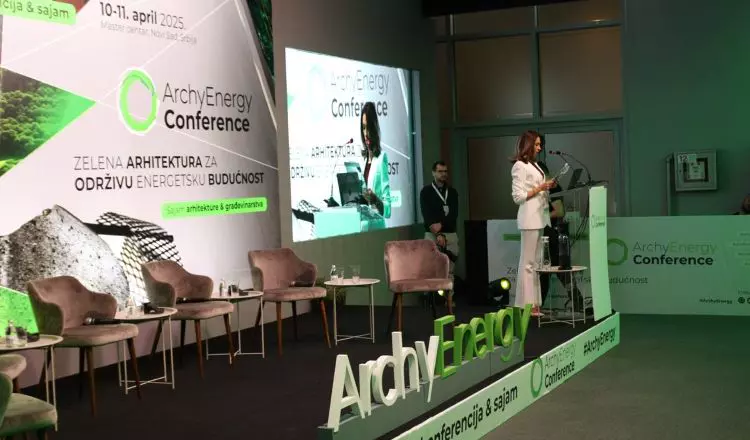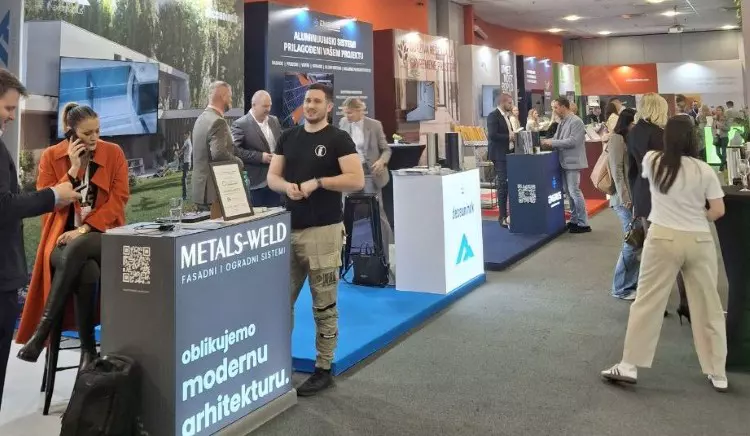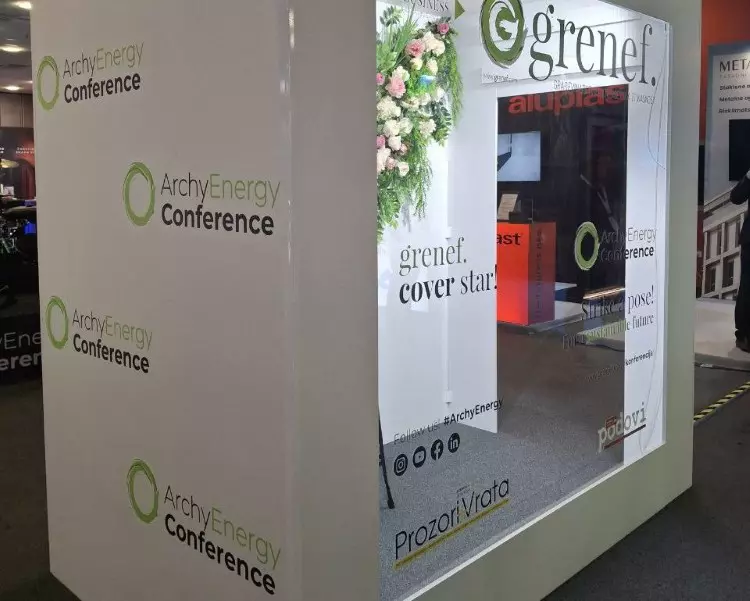How can architecture lead the way to more sustainable cities? That question stood at the heart of ArchyEnergy 2025 conference, held on April 10–11 at the Master Center in Novi Sad, Serbia. The event brought together over 1,500 participants — including top experts, architects, students, and innovators from across Europe — to explore green building, energy efficiency, and smart urban planning.
A vision for urban futures
Organized by Grenef, Podovi, and Prozori + Vrata, ArchyEnergy 2025 featured a dynamic two-day program combining a high-level conference and a vibrant trade fair. The atmosphere was inspiring from the start: a harp performance by Ana Marija set an elegant tone, followed by opening remarks from Jelena Bunčić and Predrag Rađen, the event’s lead organizer.

“ArchyEnergy is more than a fair and conference. It’s a platform for dialogue, challenge, and continuous professional growth,” said Rađen.
A keynote speech was delivered by Milka Gnjato, M.Arch, COO and Partner at Zabriskie, one of Serbia’s most respected architects. She invited the audience to shift their perspective: “We must stop seeing cities as just an assembly of materials and technologies and begin to see them as ecosystems — where people, technology, and nature exist in synergy.”
Branislav Lj. Jovanović, General Manager of Axioma Plus — the exclusive distributor of Profilink products and the general sponsor of this year’s event — also took the stage to express gratitude and handed the floor to Nenad Ivanišević, Provincial Secretary for Economy and Tourism of Vojvodina. Ivanišević emphasized the importance of the event for the region, expressing hope that ArchyEnergy will become a tradition in Novi Sad.
Highlights from the panels
Sustainable and profitable projects
The first panel addressed how to align architecture with business and finance. Speakers explored how to bridge the gap between creative vision and economic reality. Topics included the importance of trust between stakeholders, the role of banks from planning to execution, and how design choices — like rejecting unsuitable tenants — can maintain long-term integrity.
Smart building and material innovation
The second panel, focused on smart buildings, featured leading voices from ABB Serbia, Zabriskie, and Mapei. They highlighted how IoT and automation are revolutionizing construction. Milka Gnjato shared insights into the Philharmonic Hall project — a design featuring a self-sustaining lake for rainwater reuse — while Mapei introduced its new ZIRO LINE. Antonijević presented the VIVA Research Park with 11 experimental homes built using different materials, monitored for performance. The panel emphasized that smart design must start at the planning phase, not just during implementation.
Circular construction: waste as a resource
Architect Marko Korošec led a session on circular economy in construction. The discussion centered on when to renovate versus demolish, and how to reuse materials from demolished sites. Experts emphasized the growing importance of sustainable resource use in urban development.

Aluminum, glass, and high-performance facades
A panel on aluminum and glass systems explored how these materials enable energy-efficient and visually striking buildings. Speakers discussed the popularity of sliding systems, use of recycled aluminum, and the importance of independent product certification.
Lighting the future with LED and digital integration
In a practical workshop, attendees examined how LED lighting and smart systems can enhance both aesthetics and energy efficiency. The session offered real-life applications of digital integration in modern architecture.
Transforming cities through major projects
The concluding panel examined how large-scale developments are reshaping cities. Speakers reflected on balancing economic goals with ecological responsibility and human-centered design. These projects, they noted, must serve both urban growth and community well-being.

ArchyEnergy 2025 trade fair: innovation on display
While panels sparked dialogue, the parallel trade fair brought innovation to life. More than 40 leading companies — including Hisense, Mapei, Alumil, ABB, Roca, and Delta Real Estate — showcased their latest products in sustainable construction.
Visitors explored new materials, smart technologies, modular systems, and green building solutions. The fair encouraged face-to-face conversations between suppliers and professionals, opening doors to future partnerships.

Why ArchyEnergy 2025 matters
ArchyEnergy 2025 did more than showcase trends. It created a vital forum for open discussion and knowledge sharing. The event highlighted key challenges such as policy fragmentation and economic uncertainty, but also pointed to clear solutions through collaboration and innovation.
From thought-provoking ideas to real-world case studies, ArchyEnergy 2025 showed how architecture can help cities thrive sustainably and be smart.


